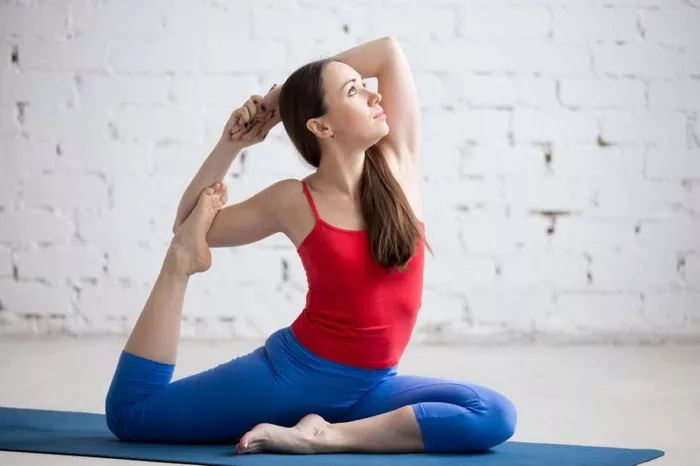Kriya Yoga, an ancient and highly revered system of spiritual practice, has been taught for centuries to help individuals deepen their connection to the Divine and achieve self-realization. The term “Kriya” is derived from the Sanskrit word “Kri,” meaning “action” or “deed,” and “Ya” meaning “union.” Together, it refers to a set of techniques that integrate physical, mental, and spiritual practices designed to accelerate personal growth and spiritual development.
This powerful discipline is primarily focused on purifying the body and mind to enable the practitioner to experience a heightened state of consciousness, inner peace, and self-awareness. Kriya Yoga encompasses a variety of practices, but its foundation is built on three central components, known as the “Three Practices of Kriya Yoga.” These three practices are:
Pranayama – Control of the Life Force (Breathing Techniques)
Dhyana – Meditation (Concentration and Stillness of the Mind)
Kriya – Physical and Mental Purification Techniques
In this article, we will explore these three practices in detail, discuss their significance, and explain how they contribute to an individual’s overall well-being and spiritual growth.
1. Pranayama – Control of the Life Force
The first and most fundamental practice in Kriya Yoga is Pranayama, which is the conscious control of prana, or life energy. “Prana” refers to the vital energy that flows through all living beings, and “Ayama” means control or regulation. In essence, Pranayama is the art of managing and directing one’s breath to influence the flow of prana in the body.
Importance of Pranayama
Breathing is an involuntary process, but when practiced consciously, it becomes a powerful tool for mental clarity, emotional balance, and spiritual awakening. Pranayama helps in cultivating harmony between the body and the mind, as it not only oxygenates the body but also regulates the flow of prana through the subtle energy channels known as “nadis.”
The practice of Pranayama enhances physical health by improving lung capacity, boosting the immune system, and calming the nervous system. On a mental level, Pranayama improves concentration, reduces stress, and creates a sense of inner calm. Spiritually, it serves as a gateway to higher states of consciousness, helping the practitioner connect with their deeper self.
Types of Pranayama
There are several types of Pranayama, each with specific benefits and techniques. Some of the most common forms include:
Ujjayi Pranayama (Victorious Breath): This technique involves breathing deeply and slowly through the nose while slightly constricting the throat, creating a soft hissing sound. Ujjayi Pranayama is often used in yoga practices to maintain focus, regulate breath, and build internal heat.
Nadi Shodhana (Alternate Nostril Breathing): This form of Pranayama involves inhaling and exhaling alternately through each nostril, which is believed to balance the flow of prana and purify the energy channels in the body. It is often used to calm the mind and enhance concentration.
Kapalbhati (Skull Shining Breath): Kapalbhati involves rapid, forceful exhalations followed by passive inhalations. This technique is highly energizing, clearing the mind and purifying the respiratory system.
Bhastrika (Bellows Breath): This technique involves deep, forceful breathing with rapid inhalations and exhalations. It stimulates energy in the body, improves oxygenation, and helps clear emotional blockages.
How Pranayama Relates to Kriya Yoga
In Kriya Yoga, Pranayama is a fundamental practice because it serves as a means of controlling and redirecting the flow of prana to awaken the dormant spiritual energy within. It is believed that by mastering Pranayama, a practitioner can harmonize their physical, mental, and spiritual states, paving the way for deeper meditation and self-realization.
Pranayama prepares the practitioner for meditation by calming the mind and stabilizing the nervous system. As the breath becomes slow and steady, the mind also becomes quieter, allowing for a deeper focus during meditation.
2. Dhyana – Meditation (Concentration and Stillness of the Mind)
The second central practice of Kriya Yoga is Dhyana, which translates to “meditation” or “concentration.” Dhyana is the practice of turning the mind inward to achieve stillness, focus, and deep awareness. It involves sitting in a quiet, comfortable position and focusing the mind on a single object, sound, or mantra.
Importance of Dhyana
Meditation is a cornerstone of spiritual practice in Kriya Yoga because it is through meditation that the practitioner can experience a direct connection with their higher self and the Divine. The mind is often clouded with distractions, worries, and desires, which prevent us from experiencing true peace and spiritual clarity. Through Dhyana, one can quiet these distractions and gain access to a state of inner silence and bliss.
Dhyana not only has profound spiritual benefits but also offers numerous psychological and physiological advantages. Meditation helps reduce stress, improve concentration, enhance emotional stability, and promote overall mental health. On a deeper level, meditation helps to break free from the ego and illusions of separation, leading to a sense of oneness with all of existence.
Different Meditation Techniques
There are many types of meditation that can be practiced within the context of Kriya Yoga. Some of the primary forms include:
Mantra Meditation: This involves the repetition of a sacred word or phrase, known as a “mantra,” to focus the mind and enter a deeper state of consciousness. The mantra can be a syllable like “Om,” a deity’s name, or a phrase with spiritual significance. Repeating the mantra creates a rhythm that calms the mind and helps it transcend ordinary thoughts.
Visualization: In this practice, the practitioner visualizes a specific image or scenario, such as a divine figure, a symbol, or a bright light. Visualization can help cultivate positive emotions and invoke a sense of connection with the Divine.
Vipassana Meditation: This meditation involves observing the breath and bodily sensations without judgment. By cultivating awareness of the present moment, the practitioner learns to detach from the fluctuating thoughts and emotions that arise.
Trataka (Concentration on a Flame): This technique involves staring at a candle flame or other focal point to develop concentration and mental clarity. Trataka can help focus the mind and improve the ability to meditate without distraction.
Dhyana in the Context of Kriya Yoga
In Kriya Yoga, Dhyana plays a central role in spiritual awakening. It is through meditation that the practitioner can access higher states of consciousness, experience profound insights, and achieve self-realization. Regular meditation practice calms the mind, dissolves mental impurities, and fosters a deeper connection with the Divine.
The ultimate goal of Dhyana is to attain Samadhi, a state of perfect union with the Divine, in which the practitioner transcends the limitations of the ego and experiences oneness with all of existence. This is the ultimate state of liberation in Kriya Yoga.
3. Kriya – Physical and Mental Purification Techniques
The third and most unique aspect of Kriya Yoga is the Kriya, a set of advanced physical and mental purification techniques designed to accelerate spiritual growth. “Kriya” refers to any action or practice that purifies and transforms the body and mind, leading the practitioner closer to enlightenment.
Importance of Kriya
Kriya practices are designed to purify the body, mind, and energy system to create a more refined, balanced, and harmonious being. These techniques help to release accumulated toxins, emotions, and mental blockages that hinder the flow of prana and spiritual energy.
Kriyas typically involve a combination of breath control, specific postures, energy locks (known as “bandhas”), and visualization. The ultimate goal of Kriya is to accelerate spiritual evolution by purifying the energy system and awakening latent spiritual powers, such as Kundalini (the dormant spiritual energy at the base of the spine).
Common Kriya Techniques
Some of the common Kriya techniques practiced in Kriya Yoga include:
Kundalini Awakening: This practice involves awakening the dormant spiritual energy at the base of the spine and guiding it upward through the chakras. The rising of Kundalini energy is said to lead to profound spiritual enlightenment and self-realization.
Pranayama Kriyas: These are specific sequences of Pranayama exercises designed to purify the body and mind. These techniques often involve controlled breathing patterns that influence the flow of prana in the body.
Mudras and Bandhas: These are physical gestures and locks that help direct the flow of prana within the body. Mudras are hand gestures, while Bandhas involve tightening or releasing specific muscles to create energy seals that facilitate the upward movement of prana.
Energy Cleansing Practices: Kriya Yoga also includes various purification techniques that involve the use of sound, light, and other tools to cleanse the body and energy system from accumulated negativity and blockages.
Kriya in the Context of Kriya Yoga
Kriyas are essential to the process of spiritual transformation in Kriya Yoga. They work directly with the body’s energy system to purify and harmonize the individual’s physical, mental, and spiritual states. As the body and mind are purified, the practitioner experiences greater clarity, peace, and an enhanced connection with their inner self.
In combination with Pranayama and Dhyana, Kriya techniques enable the practitioner to overcome the limitations of the physical and mental body, paving the way for spiritual liberation.
Conclusion
The three practices of Kriya Yoga – Pranayama, Dhyana, and Kriya – form the core foundation of this transformative spiritual discipline. Together, they provide a comprehensive approach to achieving self-realization, inner peace, and spiritual awakening.
Through Pranayama, practitioners learn to control the breath and direct the flow of prana within the body, promoting physical health, mental clarity, and emotional balance. Dhyana, the practice of meditation, helps to quiet the mind and deepen the connection to the Divine, ultimately leading to higher states of consciousness. Finally, the Kriya techniques accelerate spiritual growth by purifying the body and mind, releasing blockages, and awakening the dormant spiritual potential within.
Kriya Yoga is not just a system of physical exercises or meditation techniques; it is a holistic path to self-mastery, spiritual awakening, and oneness with the Divine. By embracing these three practices with dedication and discipline, practitioners can embark on a journey of profound transformation, unlocking their highest potential and experiencing the ultimate bliss of spiritual union.
Related Topics:

















